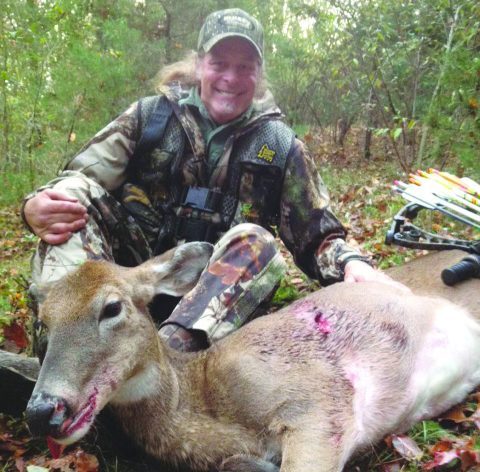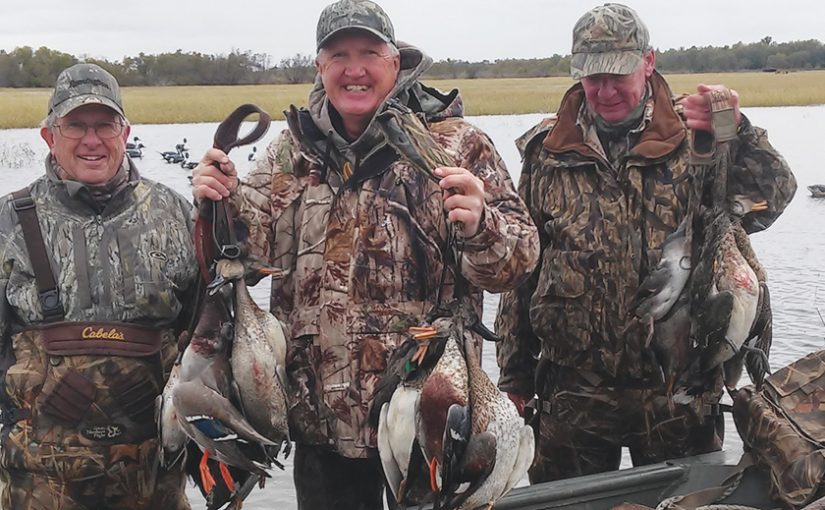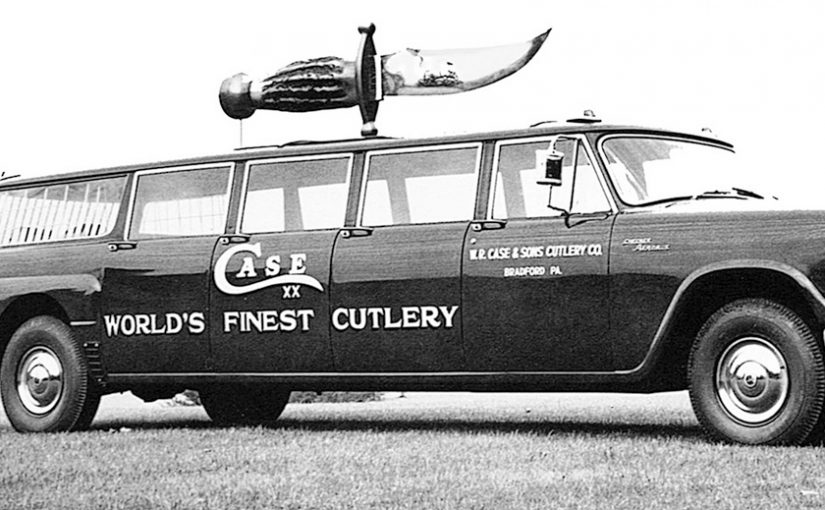Late Season Success
Rut has come and gone, and you still have a buck tag burning a hole in your pocket. The best chance a hunter had to tag a big buck ended with the rut. For the hunter that is willing to fight the snow and bitter cold temperatures, opportunities still exist for a successful hunt.
Chasing does can put a strain on a big buck. By now he has lost up to 30-percent or more of his body weight. With bucks heading into late winter, their way of thinking changes from breeding does to survival. Deer need to find food in order to gain weight, and raise their energy levels before the cold strikes and it is too late.
As hunting season draws near an end and you still have not killed a buck, the advantage is now in the buck’s favor. Bucks have been pressured all season long by both gun and bow hunters. All of this pressure has only educated the deer to hunters and their techniques.
Concentrate on hunting available food. If you can find high-calorie foods such as acorns, beechnuts, standing crops or grains left in the fields after harvesting is done, you have probably found the main source of food for the deer. Instead of walking trails and eating as they walk, deer will concentrate on any food that is easily available to them. Bucks will not be found wandering around aimlessly through the woods, but will instead take a straight path from bedding areas to feeding areas, and back to their bedding areas again.
This is the time of the year when deer will eat foods that they normally would have passed on earlier in the season. Keep in mind that movement patterns could change from year to year depending on the food that is available.
Hopefully you are fortunate enough to have a late-winter food plot available to hunt. Many wildlife seed companies offer special blends for late winter food plots. Winter wheat, rye and brassica are good choices of food that deer love. After the first frost, the starches in these plants turn to sugar that deer cannot seem to resist.
Even though you have found food, deer still require water. Rely on the scouting you did in the preseason to locate water. When the weather turns cold, ponds and lakes will freeze over. The best option is to find water that is moving fast enough to prevent freezing.
I prefer to hunt from the ground when pursuing whitetails late in the season. Hunting from the ground allows me to easily switch hunting locations when the wind turns around and starts to blow from the “wrong” direction. It is also good to be versatile when the whitetails have switched from one source of food to another. With time running out to kill a deer, hunting from the ground is much quicker and easier than moving to a new stand.
As the weather turns colder, deer begin to travel in larger groups. This means that instead of having two eyes and one nose to bust you, there could easily be ten times that amount ready to pick you off. Of course, this is a problem for any hunter, but it is especially a problem when eye level with the deer.
Hunters need to set up off from the whitetails preferred trails. Setting up too close to a deer trail is a sure-fire bet that you would be detected. Do not hunt the same stands that you hunted at the beginning of the season. Those stands were fine when only one, maybe two deer, were traveling together through the area.
When the season first opened there was more vegetation and leaves to conceal the hunter. By now, all of the leaves that you were hiding behind in October are on the ground. If the deer see you before you see them you will never get the chance to fill your tag. Leave the early season stands for what they are; early season stands.
Bowhunters need to remember that late winter deer hunts will likely require longer shots to be taken. Practice and become proficient with the third and fourth pins on your sight. There will not be much use for the top pin like there was 2 months ago. I like to set up 15 to 20 yards further off the trails than I normally would a couple of months earlier. If a hunter is too close to a deer trail, the now educated deer are sure to bust him, and put and early end to his hunt.
There are many good portable blinds on the market today. Choose a blind that is capable of being tied down. A blind that is flapping in the wind will send a deer on its way without ever offering a shot. Also, choose a blind with a black lining on the interior of the blind. A camo mesh window that can be shot through will help hide any movement on the inside. Blinds come in a variety of camouflage patterns that can be matched to the terrain that you are hunting.
The problems that some hunter’s encounter when hunting from a blind is that they begin to get comfortable and feel that they are invisible when they are not. Even well camouflaged hunters inside a blind with a black lining and camouflaged mesh windows needs to be careful with their movements. Sure, you are inside a “tent”, but deer can still spot movement through the windows.
Scent control is still an issue when hunting from a ground blind. Always spray yourself and your equipment with scent eliminating spray. Do not forget to spray down the blind before climbing in. It should go without saying that the blind needs to be placed downwind of where you expect the deer to be.
Put the blind up several days before you hunt out of it. It will take that long for deer to get used to it. Placing branches in front of the blind will help break up the outline of the blind. Do not forget to place branches on the bottom of the blind. If the bottom is not broken up it will be noticeable and spook deer.
Bowhunters should practice shooting your bow from inside the blind, in both a sitting and kneeling position. Make sure you have plenty of room inside the blind, and that your bow does not brush against the blind. This could cause noise that could possible scare deer away. Keep in mind where your arrow is aimed in relation to the wall of the blind. When aiming at your target, even though your sight pin is on the buck’s vitals, it is possible that your arrow will not clear the wall of the blind. Do not forget to throw on your hunting garb during one of your practice sessions. It might be a little hot in August, but this will keep you from being surprised in December.
It is possible to successfully hunt deer from the ground without the use of a portable blind, but it will be considerably tougher. If you decide to go this route, never shoot at a deer when it is looking at you (this should apply to all hunters in all situations). Always wait until the deer is looking away or its head is behind an obstruction to block its view. Also, keep your shooting lanes natural and trimming to a bare minimum.Now, there is a not so conventional tactic that hunters can pull out of their bag of tricks. It is not used every day, but when used properly and at the right time, you might just be able to shoot a deer you otherwise would not shoot. I’m talking about a deer drive. Yes, deer drives can be successfully executed with archery gear too.
In order to execute a successful drive, use the wind to push deer to their escape route and waiting hunters. Hunters that are doing the walking should slowly move through the woods in a zigzag pattern for best results. Once a deer gets the whiff of a human that is approaching, the deer will slowly move ahead of the hunter towards what the deer thinks will be safety. In a perfect world, the deer will slowly move ahead of the walker towards safety. In a not so perfect world, the deer will be running. The good news is that it is not likely for the deer to be running if the hunter that is walking uses his odor, instead of noise and sight to cause a deer to move away from advancing danger.
The toughest thing about hunting later in the season is keeping your body warm so you can focus at the task at hand which is hunting for deer. Once your body gets cold, you stop focusing on hunting and more on staying warm. There is nothing worse than that feeling of figuring out how to warm up. Because of the synthetic inner and outer gear available for hunters it is now easier for hunters to stay warm than it has been in the past.
The arms, hands, neck and face are the toughest for me to keep warm. I have to wear less clothing on these areas of my body to be able to shoot well.
Late in the season I almost always wear bibs over my pants. Bibs enables me to keep my body warm and able to wear a lighter weight jacket that keeps my arms smaller. This makes it easier to draw my bow and reduces the chances of the bow string slapping against my arm. High quality long underwear with a windproof outer garment is often enough to keep warm.
During the summer, I am able to shoot as well as Robin Hood while wearing my t-shirt, but that all changes when I get on stand and have my hunting garb on. That is why I stress the importance in practicing in real life hunting situations. You make look a little silly to your neighbors shooting your bow in August wearing a facemask and gloves but it is vital to good shooting.
I cannot shoot a bow with heavy gloves on therefore I wear lightweight gloves from the beginning of the season to the end. To combat the cold weather, I use a hand muff stuffed with hand warmers and my hands stay comfortable.
The neck and face is a challenge for me to keep warm. A consistent shooting form is important and I must be able to feel the string against my cheek. I wear a facemask that is very good at keeping me face and neck warm. I have got in the habit of when I spot a deer I want to shoot approaching my position I simply pull down my mask and expose my face that is covered with camouflage makeup. This allows me to stay concealed and be able to feel the sting. With a deer approaching I never notice the cold on my face.
Hopefully by now you have a good idea the best ways to stay warm that will keep you hunting long enough to kill a deer.
Late season hunts can be tough. The weather is colder, deer have been pressured during the excitement of gun season, and time is quickly running out. Concentrate on what the deer are eating, and you should have a better than average chance on wrapping your tag around a deer’s leg.









